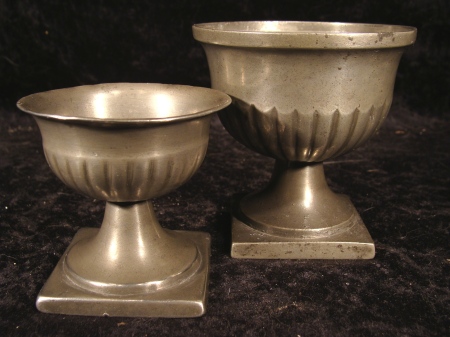 Hi and Welcome to the blog of Dutch n Duchess!
Hi and Welcome to the blog of Dutch n Duchess!
I’m ”Dutch,’ a nickname, I have acquired since being in the antiques business. My wife is an artist and together we run a web based business to supply art and antiques to dealers . I’d like to share a tidbit appropriate around the holidays or whenever there is a large enough gathering to designate ‘head of the table’ at a special dinner.
It’s my first attempt at blogging and if not successful I can at least blame the topic idea on someone else–my wife seems to think this one is amusing–where the expression worth his salt comes from. If successful please make sure all cudos are directed to me in the comments! LOL! Besides antiques, I love to cook and do some entertaining. Researching antiques items feeds my love of history and I am most pleased when I can envision the use of an item that has been out of use for so long to a modern person it is quite a curious object. I recently was amused to find out this little tidbit while researching these beautiful pewter salts.
In the olden days and by this I mean about mid-1500’s, salt was very precious because it preserved food. At the table there were special containers for it ( like the small, decorative bowls shown, but there waw quite a variation on this theme–crystal , porcelaine, shells, wood, lined silver etc.) . The salt was spooned out instead of sifted or sprinkled. Since it was very expensive and important, you didn’t just place it anywhere…it was placed in front of the head of the household. In these days, during colder weather when fires were burned for heating, there was a lot of soot powder, so the ‘salts’ (the holders) had to have lids as well. The salt vessel was considered at one time the most significant item on the table , even during Medieval times.
Well while we’re at the table…perhaps you might wonder who else had access to the salt. Who got to sit beside of the Head of the Household? The most worthy male guest was seated at the immediate right hand of the master. Members of the household sat in order of seniority to the left of his lady. And thus the expressions ‘right hand man’ and ‘worth his salt’ came into everyday language.
I love to come across anecdotes like this because it makes antique items come to life. I often wonder what the man of the house looked like and the stories he might tell about something as common as salt and the cunning of those who lusted its taste and shared  their early ways to use it. My favorite ones are not of silver as I am sure the elite would have had, lined in glass to protect them, but those made of pewter, with softly worn patina and less than perfect form that hint its survival qualities. I can only imagine the type of big trestle table, and hearty appetites of the people sitting there, so aware of their place, and the conversations sprinkled with gossip of the day as well as the little white mounds of salt.
their early ways to use it. My favorite ones are not of silver as I am sure the elite would have had, lined in glass to protect them, but those made of pewter, with softly worn patina and less than perfect form that hint its survival qualities. I can only imagine the type of big trestle table, and hearty appetites of the people sitting there, so aware of their place, and the conversations sprinkled with gossip of the day as well as the little white mounds of salt.
In closing I have a favorite salt products–for any of you who share my cooking passion– salt from the Camargue area of southern France and the French butter with the salt kernels blended into it for just the right punch. Delicious! And I admit I do like to be in hand’s reach of this versatile spice at table or stove.
Smakelijk eten!